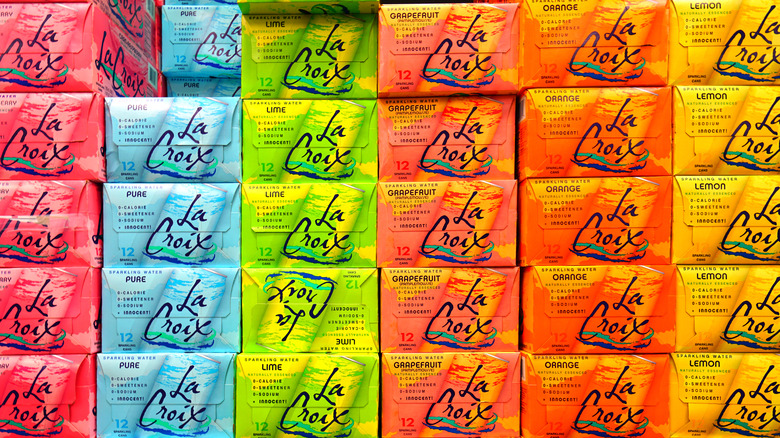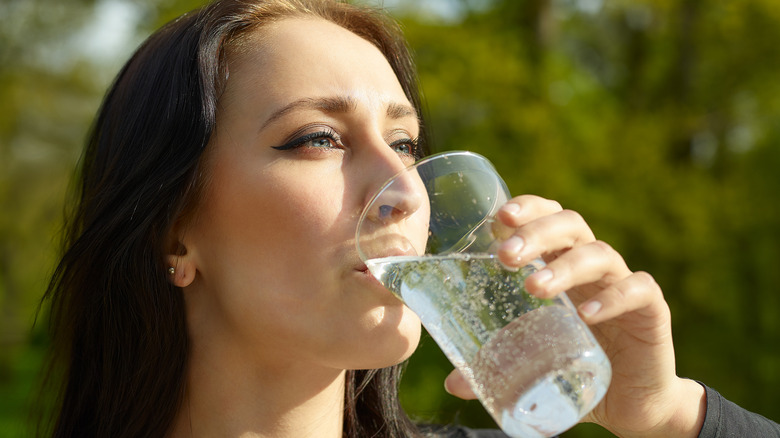How The Flavor Essences In Seltzer Are Created
Seltzer has a long and interesting history dating back to 1767, when, according to Selzer Nation, an Englishman named Joseph Priestly infused water with carbon dioxide while working at a brewery. When Europeans immigrated en masse to America in the early 1900s, they brought the fizzy drink with them and it was called "Jewish Champagne" because of how prominent the beverage was in European-Jewish households. Seltzer was even a go-to item in bars during Prohibition as a desperate alternative to more intoxicating drinks. Flash forward to the 1980s, when the well-known French brand of Perrier became popular with the American consumer – as a healthy alternative to soda with a more stylish image. Likewise, in the last few years, we have also seen the hard seltzer market explode, in which brands like White Claw and Truly, with their various flavors, have essentially turned into large cultural movements with huge social media platforms like "#ClawLife", and catchy phrases that go viral like "ain't no laws when you're drinking Claws."
Most of us are familiar with today's popular seltzer brands, like LaCroix, Bubbly, and Waterloo. While we know that seltzer is just carbonated water, we know very little about the ingredients used to flavor it. LaCroix, for example, has various flavors like "Pamplemousse" (grapefruit in French), but is a grapefruit even used in the beverage itself? The drink claims to have 'natural essences', but the actual source is a mystery.
The presence of essence
People love seltzer because it offers a kick, unlike plain flat water. According to Whyy, carbonated bubbles not only make beverages more refreshing, they stimulate our pain receptors, which sounds painful, but in small amounts, is enjoyable. It's also great for weaning off all those Diet Cokes! The FDA states "natural flavors in sparkling water can be created using natural ingredients from essential oils, extracts, distillates or other products derived from fruits, vegetables, spices, herbs, barks, roots, and other organic substances.'" The Wall Street Journal's research showed that the 'essence' in any given flavored seltzer is the same natural chemical used in other products, such as shampoo or ice pops. Taking the skin of a fruit, for example, and heating it to produce vapors that are then infused into the beverage.
Most companies are tight-lipped about their processing techniques. LaCroix's website says "the flavors are derived from the natural essence oil extracted from the fruit named on our can – no sugars or artificial ingredients contained in or added to these extracted flavors." However, some seltzer producers, like Spindrift, use alternative methods that actually use real fruit juice. Sip Trend claims that different flavors, other than the ones actually named, are occasionally used: a lemon-flavored seltzer might actually be infused with limes or even vegetables.
Nevertheless, it's good news that natural essences are truly natural and mostly come from the fruit that made them appealing in the first place!

